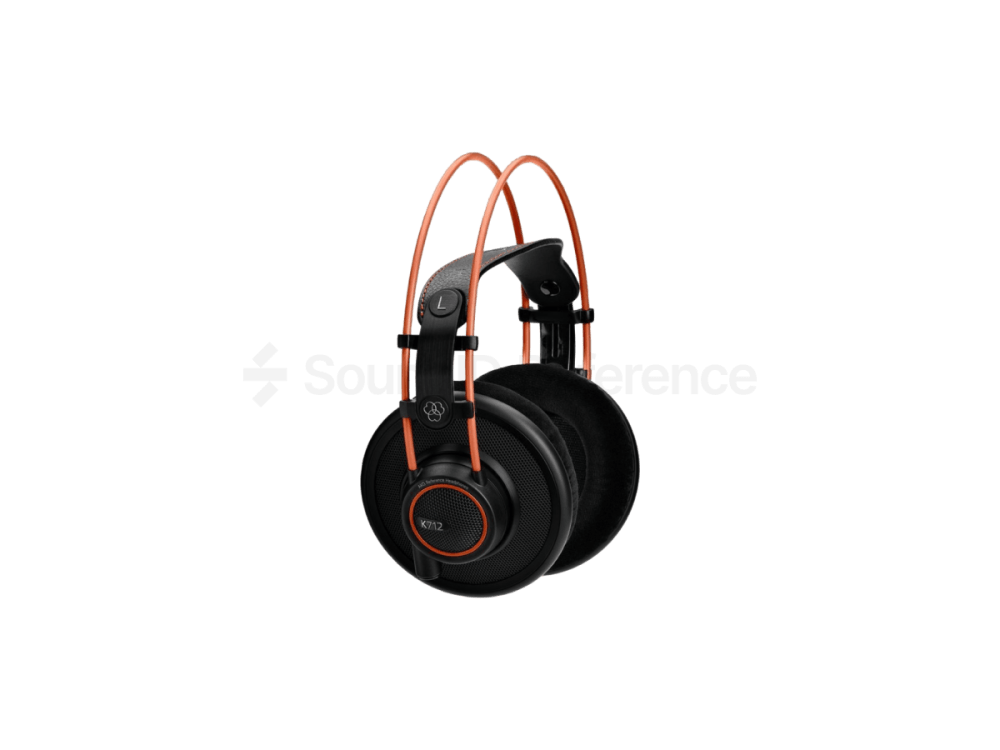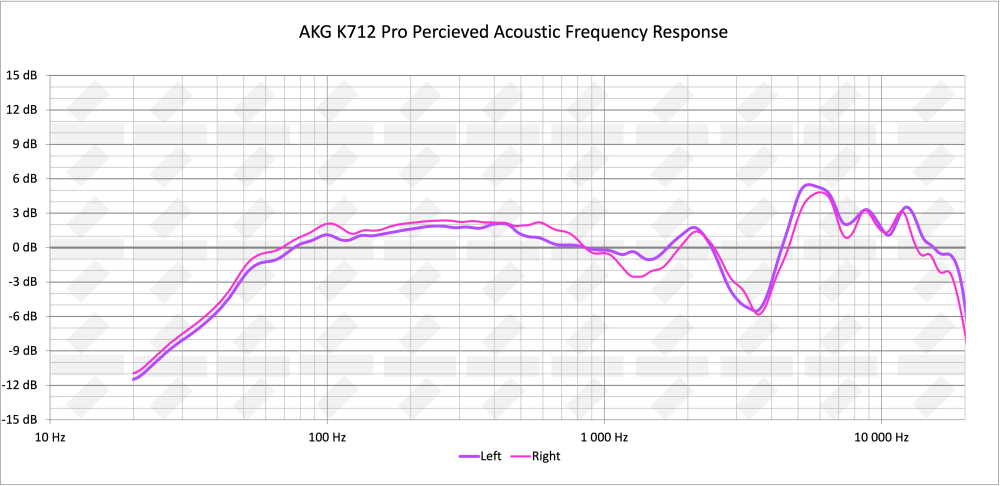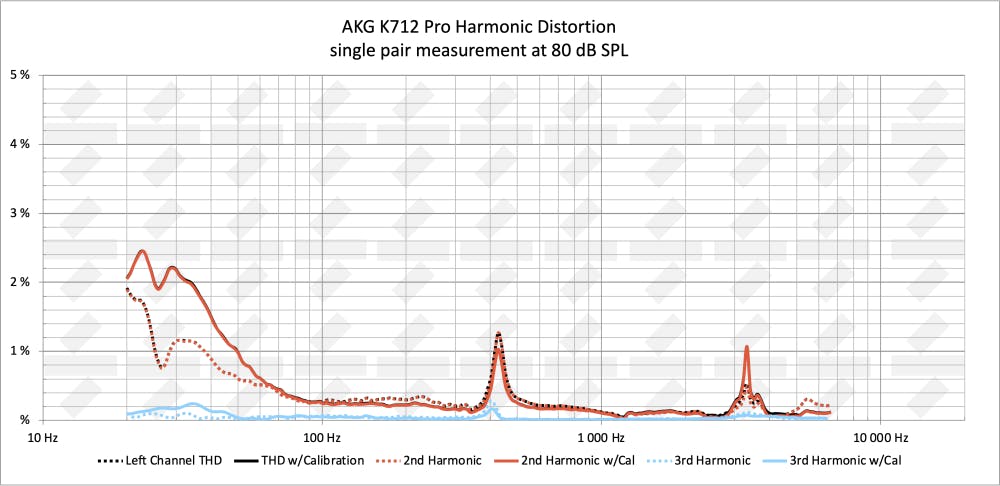AKG together with Beyerdynamic and Sennheiser are the three classic European headphone brands. Back in the early 00-ies the Sennheiser HD 650, Beyerdynamic DT 880 Pro and AKG K701 were the trio of decent headphones one would be looking to get. The AKG K712 Pro is a direct descendent of the classic K701, using a very similar physical design, but a different driver. So read on to find out whether the AKG classic can stand up to the challenges of modern music production.
- Nice build quality
- Reasonably comfy
- Complete accessory package
- Relatively neutral mids
Pros list with SoundID Reference calibration
- Bass extension grows
- Neutral frequency response
- Rolled off sub-bass
- Upper mids have a severe dip
- Highs are hyped
Despite having a low-ish 62 Ohm impedance, the K712 Pro isn’t easy to drive. This headphone is about 18 dB less sensitive than say an Audio-Technica ATH-M50x, so an audio interface headphone output is a must. 62 Ohm impedance also means that headphone output impedance should be kept under 1 Ohm, however, the impedance peak at K712 Pro’s self-resonance is so low, that audible coloration shouldn’t occur.
Build quality is very good, all of the important mechanical parts are either metal or durable plastic. The “hammock” headband is made out of leather and shouldn’t wear out too fast. Earpads are made out of firm foam and covered in plush-like fabric. Swapping them out shouldn’t be a problem as they’re easily obtainable and can be removed without tools. The cable is also easily removable and the K712 Pro comes with two of them.
As with most open-back headphones, the mid-band from 80 Hz to 1100 Hz is relatively neutral. This is vital as most of the music has instrument fundamental tones in this range. Therefore if the mids aren’t right, then forget about the rest. Going up things stop being rosy, upper mids show two dips at 1.3 kHz and 3.5 kHz which most noticeably affect distortion effects on many instruments. After the dip highs, starting from 5 kHz, are hyped therefore making overtones too prominent. This does make the K712 Pro appear more detailed than it really is, which can sound pleasant at first but tends to increase ear fatigue. Bass roll-off is typical for an open-back headphone, so truthful sub-bass representation can’t be expected unless headphones are calibrated.
Matching between the channels on the K712 Pro is fair and comparable to that of its rivals in this price bracket. There should be no issues with stereo-imaging.
Like many other AKG headphones, the K712 Pro uses a “hammock” type suspended headband to keep the weight of the headphone securely on one’s head. There are no pronounced pressure points, hence working with the K712 Pro is a breeze even after many hours. The ear pads are plush and exert little pressure on the ears and side of one’s temple. Overall AKG has done a really good job here.
Compared to its direct competition, the K712 Pro does pretty well. In Europe, at €225 it’s cheaper than the Sennheiser HD 650 to which it loses in terms of sonic accuracy. Beyerdynamic DT 990 Pro open-backs generally suffer from the same problems as the K712 Pro, yet can be found for around half the price. Therefore the value isn’t great, but at a deep discount, these should be a decent purchase.
However, in the U.S. it’s a harder sell at $550.
Distortion overall is typical for an open-back headphone of this price range. I would say that the distortion in the low end is very good and only peaks over the audibility threshold at the very bottom. There is slight peaking at 3 kHz, however, it’s probable that the peak manifests due to the drop in amplitude, as seen in the frequency response graph. In other words – if the absolute distortion component stays the same, yet signal amplitude falls, then distortion to signal percentage grows.
How accurate and consistent is the correction effect among different listeners?The rather large capsules of the K712 Pro leave a lot of room for ear positioning changes, so consistency isn’t too good. The biggest change is the 3 kHz region, which can be slightly off.
How much do they differ pair to pair in terms of frequency response?Consistency between samples is good and in line with other headphones of this price point.
Rating
Conclusion
The AKG K712 Pro is a decent offering from the Austrian (now owned by Samsung) company. The overall sound quality puts it behind the HD 58X/600/650/6XX quartet, but it’s a better package than the Beyerdynamic DT 990 Pro. Stock the K712 Pro is a bit hot in the highs, but far from the worst offender in this department. Distortion figures are class-leading in this price range for open-back headphones, however, the bass rolls off too early for serious EDM work.
Final Rating
Calibration Enabled
Calibration







